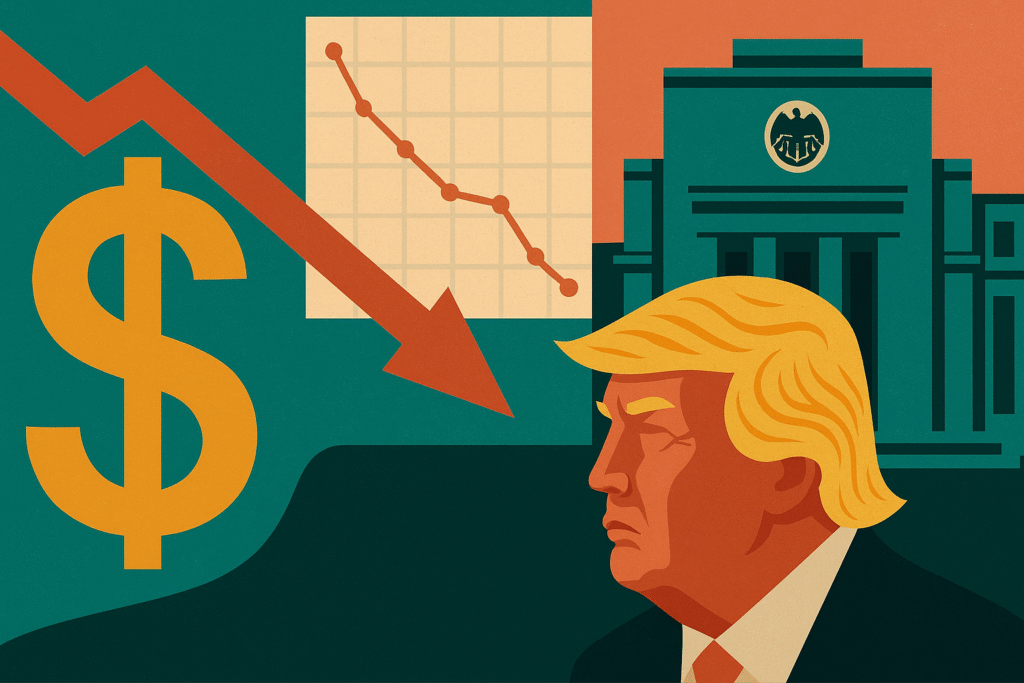In a move that defied mounting political pressure from President Donald Trump, the Federal Reserve chose to maintain U.S. interest rates at 4.25% to 4.5%, marking the fifth consecutive meeting without a rate change. The decision underscores the central bank’s independence amid growing tensions with the White House over monetary policy and the direction of the U.S. economy.
Speaking after the Federal Open Market Committee (FOMC) meeting, Fed Chair Jay Powell stated, “It seems to me — and to almost the whole committee — that the economy is not performing as though restrictive policy is holding it back inappropriately,” while warning of “downside risk to the labour market in coming months.”
Powell also highlighted ongoing uncertainty about the inflationary effects of Trump’s tariffs, signaling a cautious stance on future policy moves.
Unprecedented Political Pressure
The rate hold came in spite of an aggressive public campaign from President Trump, who has repeatedly criticized Powell for not cutting interest rates. The president’s frustrations peaked last week with a surprise visit to the Federal Reserve, during which he personally rebuked Powell and criticized the central bank’s $2.5 billion refurbishment project.
Trump has nicknamed the Fed chair “Too Late Powell” and has openly demanded aggressive cuts in borrowing costs, arguing that lower rates are essential to sustain growth and support U.S. households amid global trade uncertainty.
Dissent Within the Fed
For the first time since 1993, multiple Fed governors dissented from the majority. Christopher Waller and Michelle Bowman voted in favor of a quarter-point cut, reflecting internal divisions on how to interpret recent economic data. Powell downplayed the dissent, noting that both governors provided “clear explanations” for their views.
Economic Growth Strong on the Surface, but Cracks Emerge
Earlier in the day, the Bureau of Economic Analysis reported that the U.S. economy grew at an annualized 3% in the second quarter — a figure Trump praised as “WAY BETTER THAN EXPECTED!”
However, analysts cautioned against overconfidence. “Beneath the top-line figure, the economy is switching to a lower gear,” said Bernard Yaros, economist at Oxford Economics, pointing to signs of slowing consumer demand and weakening job growth.
Many investors had anticipated Powell would signal a potential rate cut in the fall. His failure to do so was interpreted as a hawkish move, further dampening market expectations.
Broader Political and Economic Landscape
The Fed’s decision comes at a politically charged time, as the Trump administration continues to implement new tariffs, including a 15% levy on South Korean goods and selective exemptions on refined copper imports. These moves have stirred volatility in global commodity markets and complicated inflation forecasts.
Meanwhile, growing rifts are appearing in Trump’s foreign policy, notably with his increasingly public criticism of Israeli Prime Minister Benjamin Netanyahu over humanitarian conditions in Gaza — a rare move that some analysts interpret as a signal of shifting U.S.-Israel dynamics under Trump’s leadership.
Looking Ahead
The standoff between the Fed and the White House reflects deeper questions about monetary independence and the balance of economic power in Washington. As the U.S. heads toward the 2026 midterms, Trump’s focus on interest rates and economic messaging is expected to intensify.
Powell, for now, is holding the line on inflation control and economic stability — but continued political attacks and economic unpredictability may test the Fed’s resolve in the months ahead.



